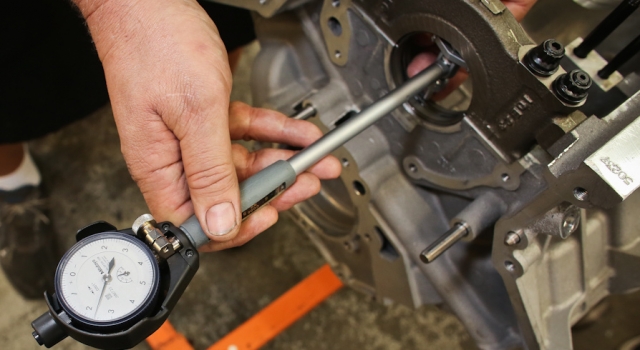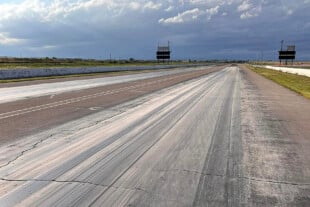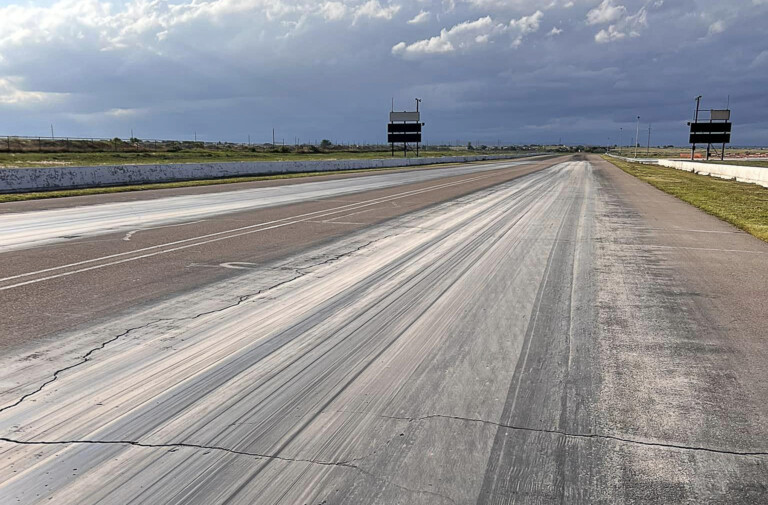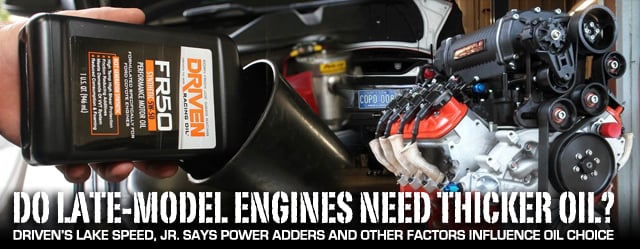 The question of when to run a thicker-than-factory oil in a late-model musclecar often arises at the track or in the garage, and the topic deserves a closer look — given the tight tolerances built into today’s engines. Some builders recommend running a thicker oil when upgrading to a power adder, such as a blower or turbo, but is that necessary? And if it is, why?
The question of when to run a thicker-than-factory oil in a late-model musclecar often arises at the track or in the garage, and the topic deserves a closer look — given the tight tolerances built into today’s engines. Some builders recommend running a thicker oil when upgrading to a power adder, such as a blower or turbo, but is that necessary? And if it is, why?
While some may complain about the cost, remember that oil is cheaper than an engine.–Lake Speed, Jr., Driven Racing Oil
When discussing oil viscosity, the focus should be on clearances. Oil pressure is a measurement of resistance, and the clearances inside the engine combined with the oil viscosity determine the oil pressure range. Different engines require different weight oils because they differ in bearing clearance/pump configurations. Late-model engines, such as GM’s LS series of V8s, call for a 5W-30 oil. This is what the factory determined to be ample for engine start up and longevity. As long as the factory maintenance schedules are followed, changes in bearing clearance changes are minimal.
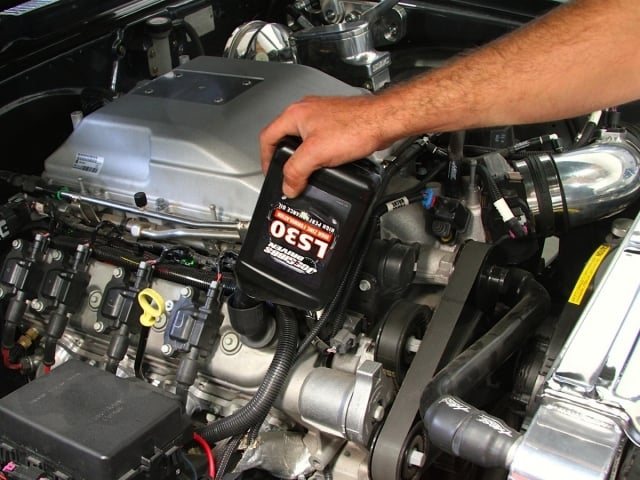 With the installation of a power adder or other measures to increase horsepower, then oil shear plays more of a factor. Oil shear is the viscosity drop under high-rpm conditions. This all has to be considered when increasing power output of any stock engine, or when building up a custom bullet.
With the installation of a power adder or other measures to increase horsepower, then oil shear plays more of a factor. Oil shear is the viscosity drop under high-rpm conditions. This all has to be considered when increasing power output of any stock engine, or when building up a custom bullet.
Bearing clearance is a highly debatable issue in the engine building world. Some builders prefer to run loose rod and main clearances with a thicker oil, while others run them tight with thin oil. Bearing manufacturer Clevite promotes a formula to determine recommended clearances (see sidebar), but in the end it really comes down to the builder preference.
Bearing Clearance Formula
According to Clevite, about .001-inch of clearance per inch of crankshaft journal diameter is a good rule of thumb. Increasing that guideline by about .0005-inch will add a little margin of safety when starting out, especially for rods. Example: .001 x 2.100 = .0021 inch then add .0005 inch for .0026” on a 2.100 journal. If clearance adjustments need to be made, use either an extra clearance part number (HX-series bearings, etc.) for more clearance.
The suggestion of increasing viscosity due to a power adder possibly comes from the fact that many of these systems are fed by the engine’s oil. An understandable assumption is that the oil would take more abuse from the increased power and the oil’s additional “trip” through the case of the blower or turbo. The question is; does the oil need to be thicker to endure this increase in abuse?
“For starters, we have to look at one of the ways off-the-shelf oils help provide fuel economy,” explains Lake Speed Jr., certified lubrication specialist at Driven Racing Oil. “You may be asking how fuel economy affects viscosity choice for engines with power adders. Well, fuel economy and viscosity are closely related, so off-the-shelf oils designed to help increase fuel economy are designed to act ‘thinner,’ and that is not good for engines with power adders.
“The trick is these cheap oils only act thin under shear forces (higher loads and higher rpm), so a fuel economy 5W-30 will end up more like 5W-20 motor oil,” continues Speed. “While this is fine for stock engines, it can be disastrous for high horsepower engines. This is why many engine builders recommend using a heavier grade like 10W-30 because it only shears (drops viscosity) down and acts like a 5W-30 – just like the engine was built for.
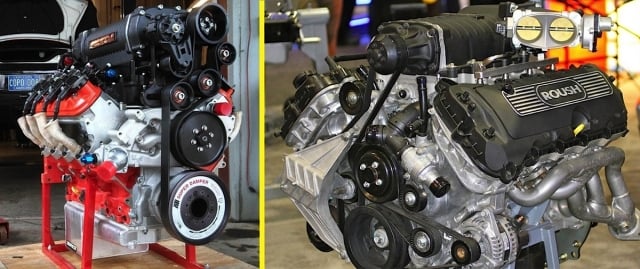
The addition of a supercharger or other power adder to a factory engine usually spurs the conversation about moving to a thicker viscosity oil.
“Now comes the critical part. A factory engine with a bolt-on power adder still has a factory oiling system. The bearing clearances are stock, the oil pump is stock, so the oiling system really needs the stock oil viscosity,” stresses Speed. “Take a Ford mod motor that calls for a 5W-20 from the factory. After you install a supercharger or turbo, the oil pump is still designed for a 5W-20. But if you are running a fuel economy 5W-20, the extra shear and load will cause the oil to become too thin, so you have two choices: run a thicker viscosity grade or choose a more shear-stable 5W-20 that does not lose any viscosity under the higher load of the power adder.”
Best advice
A shear-stable oil is designed to hold its viscosity under any loads. This oil is more expensive and harder to find, but is what is recommended for a a boosted stock engine combo. This way you get the oil the internal clearances were designed for and it won’t thin out like the cheaper oils do.
“While a thicker viscosity grade is a workable solution, remember that 70 percent of engine wear occurs at start-up, so a higher viscosity grade actually causes more wear, and we have used oil analysis that shows this,” says Speed. “Consequently, choosing a shear stable 5W-20 is the better choice – less start-up wear and proper viscosity for the engine. The GM LS series of engines call for a 5W-30, so the best choice is a shear stable 5W-30. Another way to think of it is like the bearing protection of a straight 30 grade, but the motor oil still flows at start-up like a normal 5W-30.
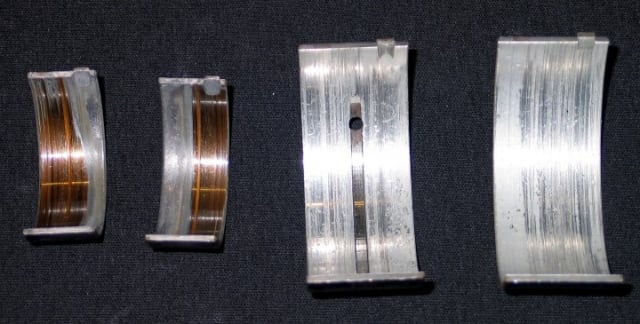
Be wary of “off-the-shelf” oils that promise to improve fuel economy and result in a thinner protective film for the bearings.
“The Ford family of late model performance engines call for either a 5W-20 or a 5W-50. We just discussed the 5W-20 example, so let’s talk about the 5W-50 option,” he said. “Can’t you just run a 15W-50 or 20W-50? The simple answer is no, and here is why. The Coyote engine that calls for a 5W-50 uses variable cam timing. The cam phasers are actuated by hydraulic force, and guess what is the hydraulic fluid? That’s right, the motor oil. Accordingly, the viscosity of the fluid or motor oil is very important when it comes to keeping the phasers working properly.”
For these high power, late model engines that are equipped with bolt-on power adders, the best advice in regards to lubrication is the following:
- Use the right viscosity
- Use the best quality motor oil
- Change it every 3,000 miles
“While some may complain about the cost, remember that oil is cheaper than an engine,” sums up Speed. “Using high quality oils, of the right viscosity and keeping the oil clean will always provide excellent engine life – even under high boost.”




